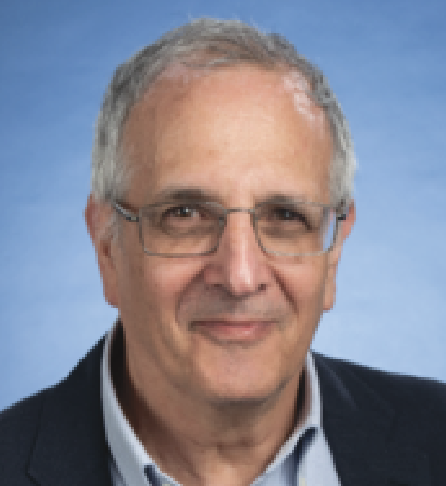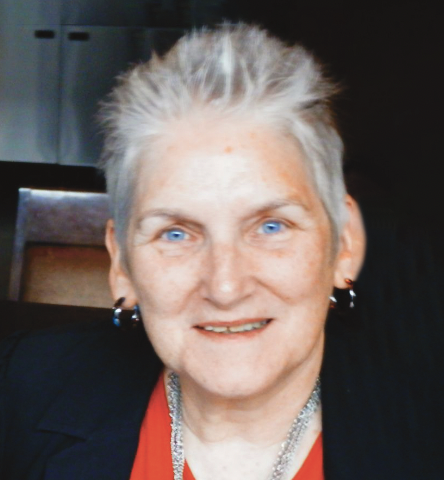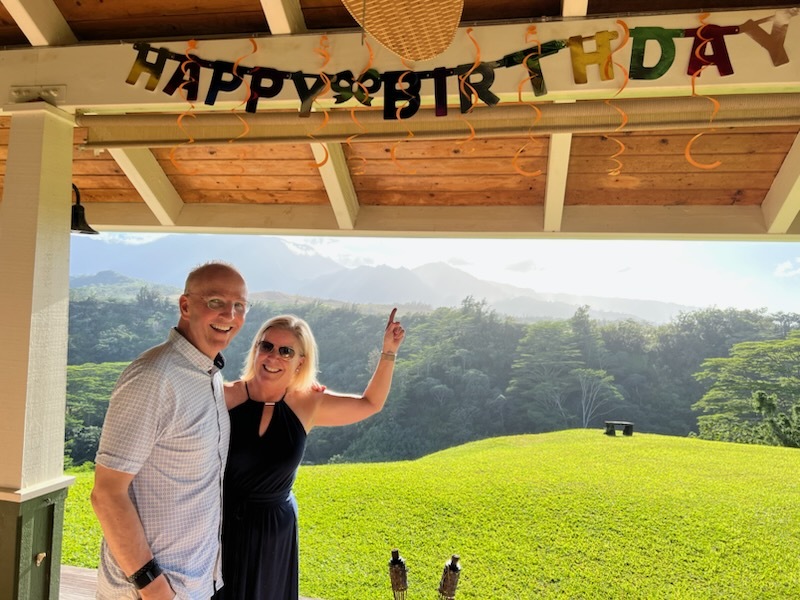
Dr. Mark Minden
Clinician Scientist, Princess Margaret Cancer Centre

Dr. Paul O’Connell
Research Program Lead, LLSC

Jackie Manthorne
President and CEO, CCSN
Acute myeloid leukemia (AML) is the most common blood cancer in older adults. With new treatments, patients are living longer and better.
In October of 2021, Shawn Omstead of Toronto and his wife were preparing to host Thanksgiving dinner. “I noticed I didn’t have much of an appetite. A few weeks earlier, while visiting my sister up north, I noticed some shortness of breath while going for a walk,” says Shawn, then aged 55.
Shawn was due for his annual physical but planned to postpone it until after he and his wife returned from a trip abroad to celebrate their 30th wedding anniversary. Given his symptoms, Shawn’s wife suggested going for his check-up before the trip. That turned out to be a wise decision. “The blood work results showed red flags everywhere,” he says. The diagnosis was acute myeloid leukemia (AML).
A complex blood cancer with many subtypes
AML is a cancer of stem cells. “These are basic cells that develop into different types of cells, such as red blood cells, platelets, T-cells, and B-cells, which all have different jobs for our daily functioning,” says Dr. Mark Minden, Clinician Scientist Emeritus at the Princess Margaret Cancer Centre, in Toronto. As stem cells develop, they become blast cells, which are immature blood cells.
I exercised regularly, ate well, didn’t smoke, and have no family history of cancer.
“With AML, the stem cells acquire mutations that cause an overproduction of these blast cells,” says Dr. Minden. These blast cells accumulate in the bone marrow and spill out into the bloodstream, preventing proper growth of normal blood cells and causing improper functioning of the blood system. “It develops quickly and is usually discovered after the onset of symptoms. Without treatment, AML is fatal because of the bone marrow failure,” says Dr. Minden. AML is a complex disease with many subtypes. Because of this, symptoms can be variable and wide-ranging, and can include weakness, fatigue, fever, infection, paleness, loss of appetite, bleeding, easy bruising, and shortness of breath. AML is the most common type of leukemia in older adults, with the average age being around 60.
Chemotherapy and stem cell transplant
To say that Shawn was in shock at his diagnosis is an understatement. “I exercised regularly, ate well, didn’t smoke, and have no family history of cancer,” he says. Shawn started treatment as an outpatient at the Princess Margaret Cancer Centre in December 2021 for the first phase of his treatment, a month-long regimen of chemotherapy. The same day, the search began for a suitable donor for the bone marrow transplant he would need for the treatment’s second phase. In a stroke of luck, his brother and sister ended up being a perfect match. “That was amazing considering the probability of a sibling being a match is only about 25 per cent,” he says. Shawn was also fortunate to be offered an experimental chemotherapy drug at the last minute which proved effective in getting him into remission quickly.
In March of 2022, Shawn had his bone marrow transplant. “That’s never a straight-and-narrow path for anyone and there are lots of side effects,” he says. In addition to infections, mouth sores, and strep throat, Shawn experienced graft versus host disease (GvHD), a condition whereby the donor’s stem cells attack the patient’s own body cells.
Sixteen months post-transplant, Shawn went back to work. “I left my executive job and now work 50 per cent of the time as a consultant, but I feel amazing and obviously my brother donating his stem cells was huge. I wouldn’t be here without him,” he says.
Innovations for AML patients
With expanding research, new AML treatment options are emerging. “While chemotherapy and stem cell transplants remain standard treatment, researchers are finding ways to make them more effective and with fewer side effects, and this includes factors like GvHD for bone marrow transplants,” says Dr. Paul O’Connell, Research Program Lead at the Leukemia and Lymphoma Society of Canada (LLSC), a national nonprofit organization.
New developments in targeted therapy and precision medicine are also showing promise. “Mutational testing, for example, lets physicians see the cell mutation occurring in a person’s leukemia and then target that specific mutation, which allows for a more effective therapy that’s less harsh on the patient,” says Dr. O’Connell.

post-transplant in Kauai
Other recent developments include immunotherapies that harness the body’s immune system to target AML. Researchers are also looking at therapies that can eliminate leukemic stem cells post-treatment. “These cells often appear in very low numbers and can cause relapse because they’re resistant to treatment. New research aims to develop therapies that target and eliminate cancer stem cells, so that the cancer doesn’t return,” says Dr. O’Connell.
Dr. Minden credits the patients themselves for many of these advancements. “Their willingness to have their cells available for research has helped us make all these new advancements. That’s a huge contribution,” he says.
Supports for patients and caregivers
Getting an AML diagnosis can be overwhelming and isolating. Groups like the LLSC and the Canadian Cancer Survivor Network (CCSN) offer support, advocacy, and information resources to patients with AML and their families. “The CCSN believes that all cancer patients and their caregivers should be well-informed about their cancers and treatment options available to them, including AML,” says Jackie Manthorne, President and CEO of the CCSN.
I tell everyone to go annually for a blood check. If I hadn’t gone, I don’t know whether I’d be here today.
During his journey, Shawn found tremendous support from the LLSC First Connection Peer Support Program. “Being able to speak to someone similar in age with the same diagnosis who had come out on the other side was really critical,” he says. Now that he’s on the other side himself, Shawn is paying it forward by becoming a First Connection Peer himself.
Most importantly, Shawn is thankful he took his wife’s advice and visited the doctor. “I tell everyone to go annually for a blood check. If I hadn’t gone, I don’t know whether I’d be here today,” he says.
Talk to your doctor or learn more at bloodcancers.ca.
This article was made possible with support from a research-based pharmaceutical company.


